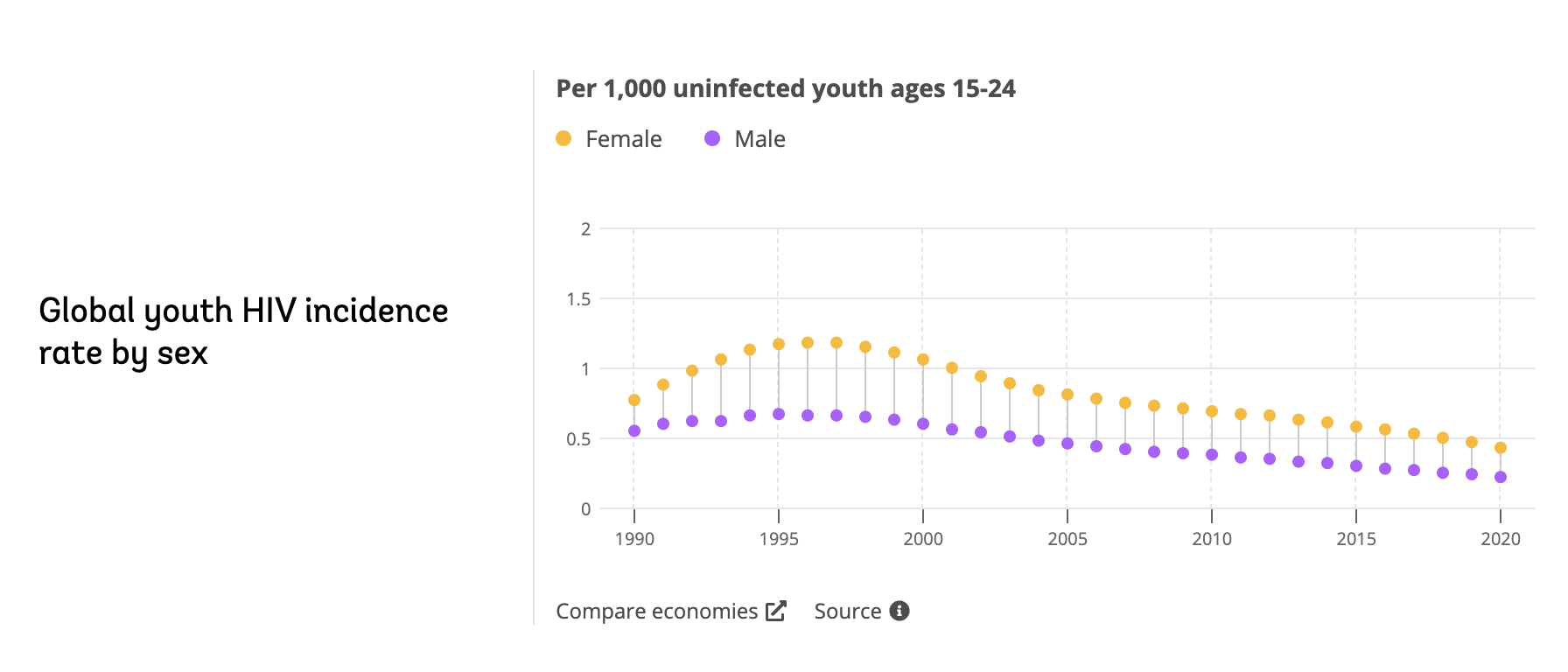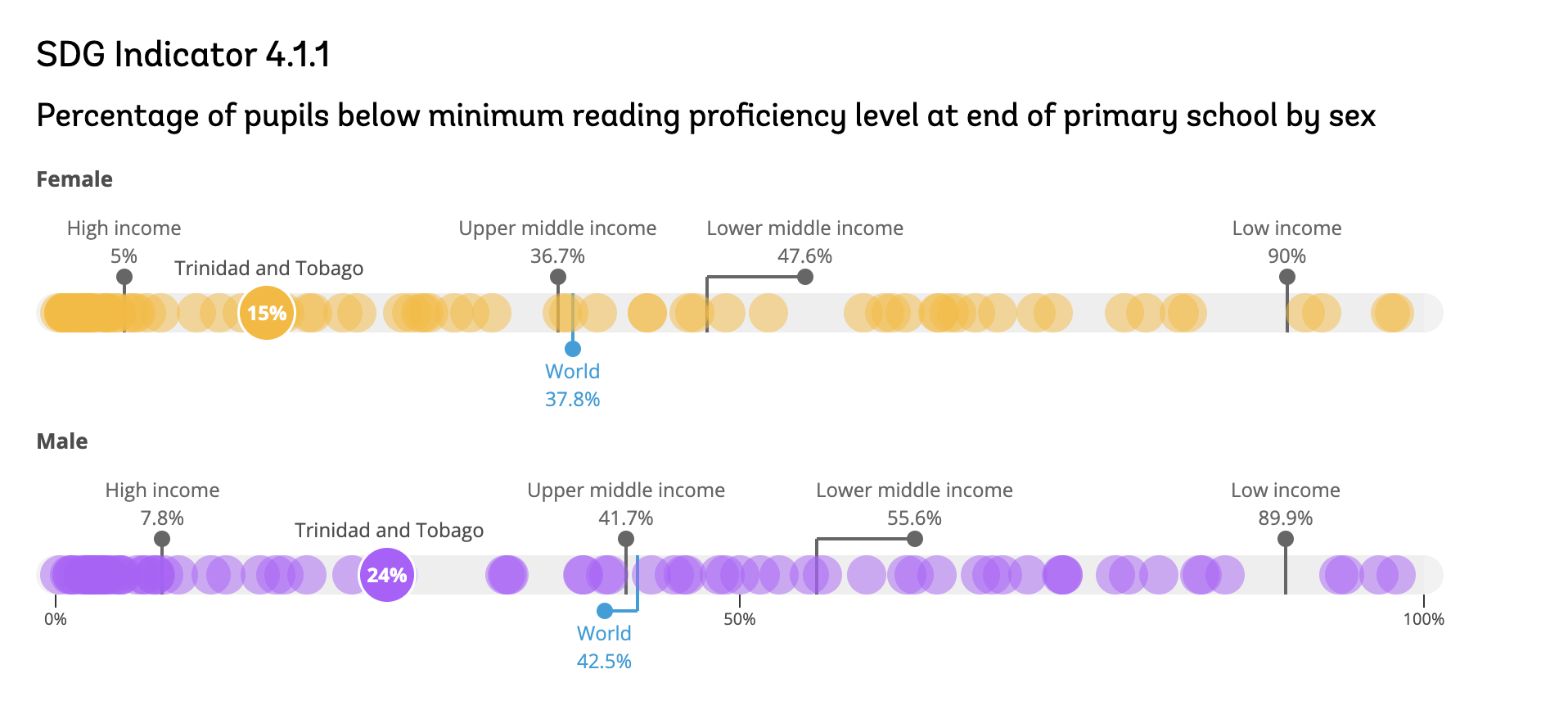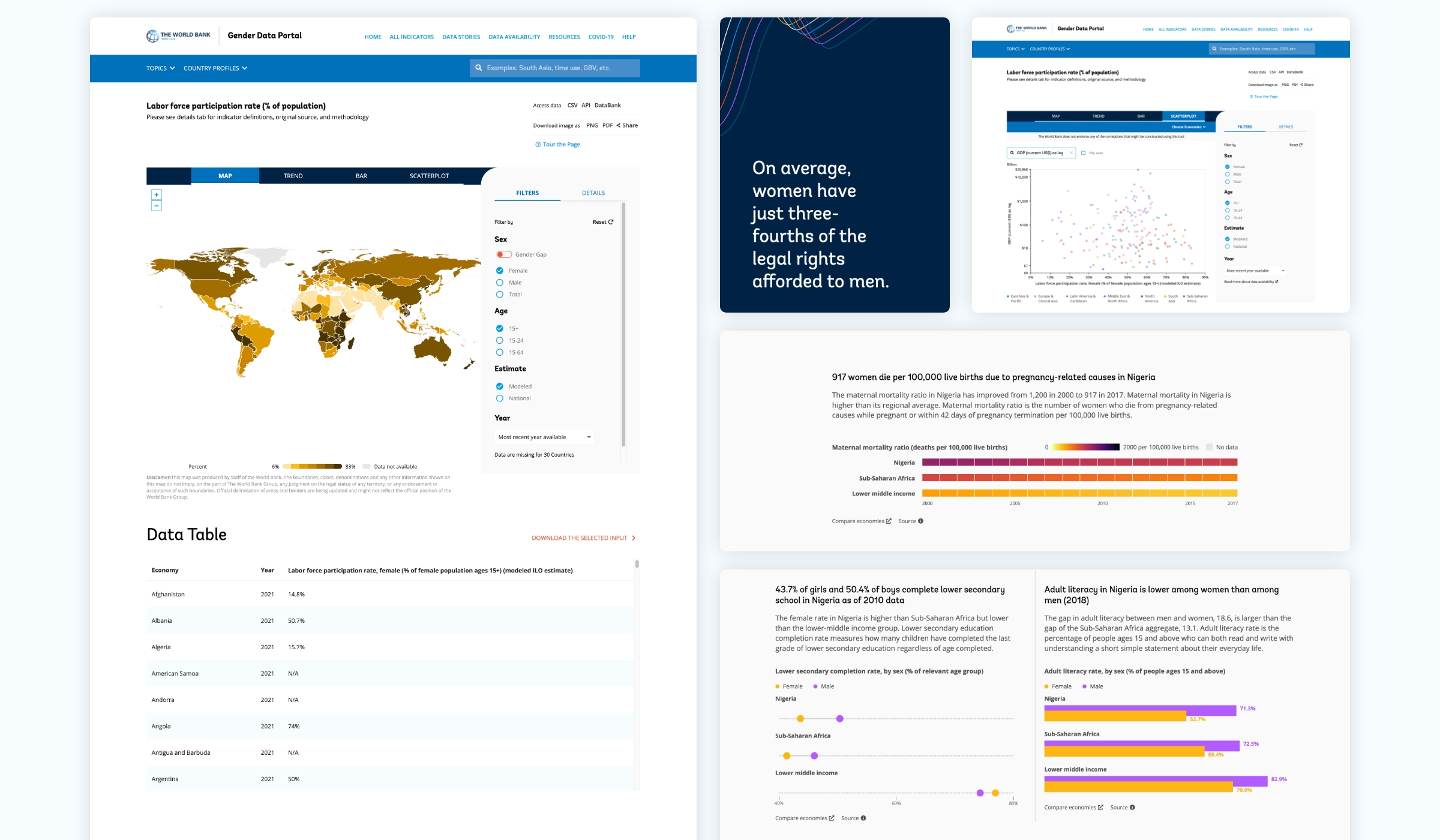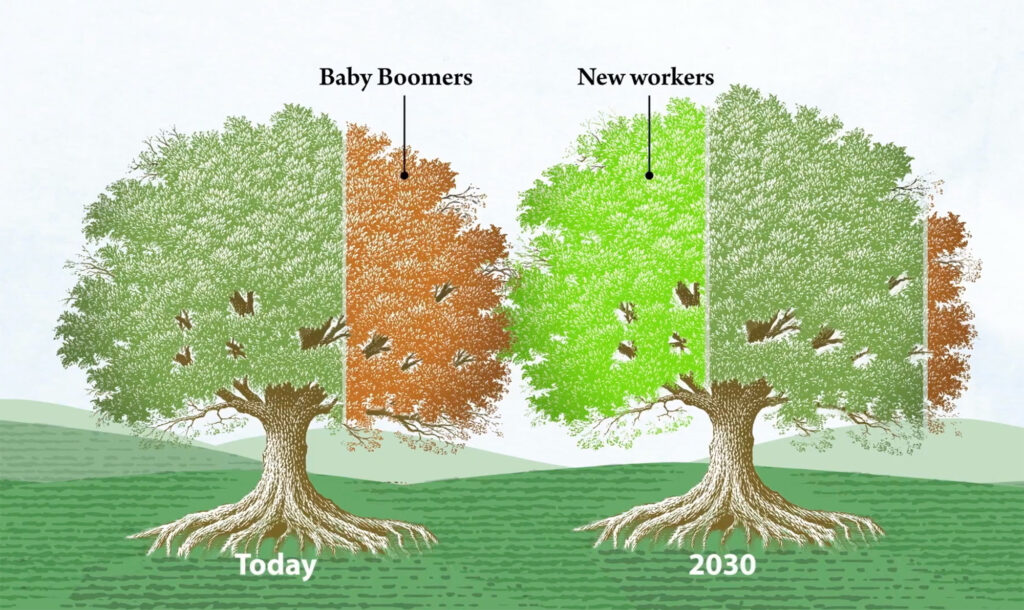The Gender Data Portal features approximately 1,000 pages, including pages for more than 200 countries. Graphicacy and the Gender and Data Groups streamlined the content by organizing it around 14 main topics (such as assets, entrepreneurship, education, and employment) with more than 200 indicator groups comprising nearly 1,000 different indicators. Here’s what the final product entailed:
- The Navigation: Graphicacy replaced the Portal’s one-dimensional dashboards with a home page presenting several options for exploring data. Clicking a topic card now leads to a richer topic profile with visualizations of key indicators, a list of all indicators within that topic, and links to related content beyond the Portal.
Users can also choose country profiles to see snapshots of gender data with visualized indicators across all topics. Graphicacy built charts showing how a selected country compares to its corresponding region, income group, or the world. Simple prompts allow users to move easily across sections and see comparative data, a task that previously required multiple clicks.
- The Stories: Data on its own may work for economists and data specialists, but reaching a broader audience requires context. Graphicacy designed the new Portal to emphasize contextual storytelling. Brief paragraphs of text, generated by an algorithm, now accompany many of the interactive visualizations.
- The Look: To immediately establish a more approachable tone, Graphicacy incorporated a colorful palette and friendlier typography into the overall Portal design. Large text callouts along with color-coded text and charts help make the Portal more welcoming to users of all backgrounds.
- Making an Impact with the Data: With a more accessible Portal, the World Bank’s Gender and Data Groups aims to attract researchers, advocates, journalists, and others who will give the data a life of its own. The greater the exposure, the greater the chance gender data will reach policymakers and others in a position to take action.
The Gender and Data Groups leadership team feels confident the new Portal will soon become the go-to source for gender data on two fronts: tracking the need for parity around the world and showing where gaps in data remain.







